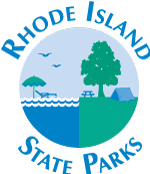East Beach History (2006)

East State Beach, located in Charlestown, Rhode Island takes up three miles of prime beach shoreline. It is the easterly extension of Quonochontaug Neck. East Beach is one of the least developed of the Rhode Island state beaches, with limited parking and a half dozen changing rooms. Nonetheless it is one of Rhode Island’s spectacular seaside treasures.
A narrow barrier beach, accessible from Route 1 via East Beach Road, it fronts and separates Ninigret Pond from the ocean. Ninigret Pond is Road Island’s largest salt water ponds. The salt water ponds are lagoons along Rhode Island’s Atlantic coast from Westerly to Narragansett. They provide safe haven for shellfish and other marine life; their grassy and reedy fringe are a refuge for birds and small animals. Their water is regularly flushed by the ocean waters that ebb and flow through natural breachways that have now been stabilized by public works engineering.
Large stone blocks hold back the sand that would otherwise clog their passages. In the case of Ninigret Pond this service is provided by the Charlestown Breachway. The easterly side of the Charlestown Breachway is also a state park with RV camping facilities. It is not accessible from East Beach, but by Charlestown Beach Road.
The northern edge of Ninigret Pond hosts the Ninigret National Wildlife Refuge with a visitor center and also Ninigret Park. During World War II, this area was developed as the Charlestown Naval Air Station, an auxiliary field of the Quonset Point Naval Air Station in North Kingstown. Here former U.S. President, George H.W. Bush trained as a Navy night fighter pilot.
The Ninigret name stems from the Native American sachem or chief of the eastern branch of the Niantic Indians, a sub-set of the Narragansetts. Remains of a trading post and fort are part of the park owned by the Town of Charlestown. It is believed the fort was built by either the Dutch or Portuguese traders on the northern edge of the pond.
The history of the beach along the southern edge is part of the story of the Quonochontaug summer colonies first developed in the 1880s. Although Quonochontaug Neck was settled as early as the 17th century, it wasn’t until two centuries later that it gained any significant habitations, and then only in its central and western portions. East Beach was relatively untouched, perhaps due to its narrow nature between the ocean and the pond. The State of Rhode Island began setting up this natural reserve in a major way with land acquisitions totaling more than 250 acres in 2006.
